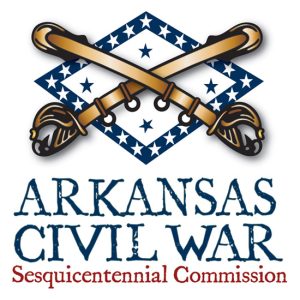calsfoundation@cals.org
Dove [Steamboat]
As part of the Union’s Mississippi River Squadron, the steamer Dove served as a chartered vessel on the Mississippi River and its tributaries, including expeditions on the White River during the ongoing battle for control of significant interior rivers in the Trans-Mississippi Department during the Civil War.
Dove displaced 350 tons, but specific details about its construction and acquisition by Union forces are not known. In the 1850s, Master John Box operated Dove as a passenger and commercial transport on the Arkansas River between New Orleans, Louisiana; Napoleon (Desha County); and Fort Smith (Sebastian County).
On March 30, 1864, the Dove transported Union troops up the White River to Gregory’s Landing (Woodruff County) for Brigadier General Christopher Columbus Andrews’s operations against Brigadier General Dandridge McRae, which culminated in the Action at Fitzhugh’s Woods on April 1, 1864.
Between July 25 and September 6, 1864, the Dove transported troops and supplies in support of operations at Helena (Phillips County), Searcy (White County), Fairview (Chicot County), and Augusta (Woodruff County). In late August 1864, Andrews ordered an expedition up the White River to locate and pursue troops under the command of Brigadier General Joseph Orville Shelby and Colonel Archibald Stephenson Dobbins. The initial phase of this expedition embarked from DeValls Bluff (Prairie County) on August 30, aboard the steamer Kate Hart and USS Fawn, with a contingent of twenty-two officers and 515 soldiers from the Twelfth Michigan Infantry and the Fifty-fourth and Sixty-first Illinois Infantry regiments. Low water levels below Augusta forced its return to DeValls Bluff before it could rendezvous with Brigadier General Joseph R. West’s cavalry division.
Andrews immediately ordered a second attempt, which embarked on the morning of September 3 with reinforcements under Colonel Lyman M. Ward of the Fourteenth Wisconsin Infantry. The additional regiment increased the expedition’s strength to 1,000, and it embarked on the morning of September 3 onboard the lighter draught steamers Nevada, Celeste, and Commercial. Soon afterward, the steamer Dove joined the expedition, with a detachment of another 200 men from the Ninety-fifth Illinois Infantry.
While serving with the second phase of this expedition on the morning of September 4, Confederate pickets observed the Union vessels from the banks above Peach Orchard Bluffs (Woodruff County). At 4:00 p.m., Rebels fired on the Commercial, Celeste, and Nevada from the shore near Gregory’s Landing. Combined Union casualties numbered nine wounded, one killed in action, one mortally wounded, and one accidental death. No Confederate reports or casualty figures exist for this incident.
On September 5, the expedition steamed to Augusta. It found no enemy present but reported Dobbins near the Cache River and Shelby near Jacksonport (Jackson County). Low water levels prevented further pursuit, and Andrews ordered the immediate return of the expedition. It arrived at DeValls Bluff on September 6 without further incident.
On April 18, 1865, the Dove served with the steamers John Raine, Cleona, and Pocahontas on the Mississippi and Hatchie rivers as transports in support of Major General Cadwallader Colden Washburn’s operations under way in Tipton County, Tennessee, against Confederate guerrillas James Madison “Matt” Luxton (younger half-brother of Nathan Bedford Forrest) and William Clarke Quantrill.
Despite the Union capture of Little Rock (Pulaski County) in September 1863, regular and irregular Confederate attacks against Union naval vessels continued to hamper operations on and along the state’s major rivers. While operating on the Yazoo River in Mississippi on July 30, 1865, the steamer Dove was boarded and robbed of $20,000, the perpetrators wounding one crewman and one passenger. Details about the postwar service and fate of steamer Dove are not known.
For additional information:
Gibson, Charles Dana, and E. Kay Gibson. Dictionary of Transports and Combatant Vessels Steam and Sail Employed by the Union Army, 1861–1868. Camden, ME: Ensign Press, 1995.
Huddleston, Duane, et al. Steamboats and Ferries on the White River: A Heritage Revisited. Conway: University of Central Arkansas Pres, 1998.
Jones, James B., Jr. Tennessee in the Civil War: Selected Contemporary Accounts of Military and Other Events, Month by Month. Jefferson, NC: McFarland, 2011.
Official Records of the Union and Confederate Navies in the War of the Rebellion. Series 2, Vol. 1, Part 1.Washington DC: Government Printing Office, 1921.
The War of the Rebellion: A Compilation of the Official Records of the Union and Confederate Armies. Series 1, Vol. 41, Part 1. Washington DC: Government Printing Office, 1893.
Robert Patrick Bender
Eastern New Mexico University–Roswell









Comments
No comments on this entry yet.